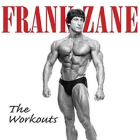After receiving several E-mails and telephone calls and having conversations with people who wanted my opinion of Stuart McRobert’s new book, Beyond Brawn, I finally checked it out. Because of McRobert’s viewpoint that all “conventional training is fundamentally wrong,” I’ve always been somewhat skeptical about what he has to say.
Nevertheless, I decided to give Beyond Brawn a fair chance. The very first sentence echoes throughout the entire book: “Unless you have a terrific genetic inheritance for muscle building, the conventional approach that prescribes a traditional split routine…delivers little or no gains.”
The book expands on many of the topics covered in McRobert’s first book, Brawn, and covers new ones. While he does state that “this book is not the final word,” he also believes that “if you cannot get big and strong from following the advice given in this text, there’s no drug-free alternative that can get you big and strong.” That’s a strong enough statement to get my attention.
McRobert emphasizes the importance of avoiding peer pressure that will “push you toward conformity” and having “a mind that is open to investigating the radical.” He also says that you must control your thoughts and avoid the negative, and the “positive will come without trying.”
According to McRobert’s definition, a hardgainer is a genetically average male. Although he explains how to avoid the negativity surrounding the term hardgainer, his approach seems to promote and even favor identifying oneself by that label. It seems to me that it would be better to avoid classifications altogether and just search for productive training routines.
McRobert discusses the thrill of training and the power to change your own physique, as well as the importance of grit and character. He also touches on the distinction between dedication and obsession and how a “tempered enthusiasm for training” is a healthier, and even more productive, approach than an “obsessive enthusiasm.”
The first chapter includes detailed anatomy charts as well as some great explanations of typical “training jargon.” Those alone could probably make an excellent booklet for the beginner/novice trainee.
Part of McRobert’s general philosophy for outstanding development is to stick with something that works, as long as it works. Don’t waste time trying to find something else, he says. “Imitating the training of the elite will have you following routines that will not get you even halfway to achieving your genetic potential.”
He also discusses practical vs. effective training, perseverance, women’s training, having achievable yet challenging goals and the importance of rest and intensity cycling, along with nutrition and the quest for radical training alternatives. “Only you can find how far you can go by actually going as far as you can go,” he writes. In order to do that, you’ll have to invest many years of effort and have “real-world targets.” By setting smaller, medium-term goals, you’ll have greater success at achieving your long-term goals. A common goal he uses is to “focus on achieving the next 5 to 10 percent gain on all your exercises.”
McRobert discusses the difference between “fantasy-land” and “reality-land” muscular girths and provides formulas and charts to help you figure realistic goals. He reminds readers that because of bone structure, bodyfat percentages and other variables, “you don’t have to be huge to be impressive.” After all, a 190-pound individual with 5 percent bodyfat will look completely different from a 190-pound individual with 20 percent bodyfat.
Strength targets are another issue. McRoberts writes about the psychological satisfaction of the “pairings of big plates.” Even though it would only be a five-pound difference, “bench-pressing 225 pounds for the first time (two 45-pound plates on each end of an Olympic bar) is much more satisfying than 220 pounds.”
The next two chapters cover strategies for long-term growth as well as where to train and what equipment to use. McRobert lists 10 factors to avoid in order to progress well in a commercial gym and gives some great suggestions for setting up a home gym. Although he states that “a good barometer of an effective gym is its sparsity of equipment,” he does have suggestions for some high-tech gear once you’ve acquired all of the essentials—if you have the money to spare.
The next chapter covers how to set up your training cycles most effectively. While cycling your intensity can be an excellent way to spike gains, McRobert reminds you not to abuse it. Cutting back or pushing too hard for too long can spell disaster. He goes on to give a good example of how to phase a medium-to-long cycle as well as advice on how to cope with “cycle disruptions,” which can range from illness to family- or work-related problems.
Included in that chapter is an interesting section dedicated to “little gems,” the 1.25-pound and other plates that most people’s egos won’t allow them to use. McRobert believes those “little gems” are important in achieving long-term goals. He even offers some creative ideas for substitutes if you don’t have small plates, including everything from magnetic PlateMates to large washers you can buy at a hardware store.
McRobert finishes the section with a long, comprehensive list of his rules for cycling. He also lists and explains some other interpretations and methods of the technique.
Throughout the book McRobert emphasizes the use of a slow and steady pace for maximum gains. One chapter, however, “How to Achieve Your Fastest Gains,” will be the most enticing to most trainees. It states that while only genetic superiors and drug-assisted athletes can make fast gains for the most part, occasionally even the average-Joe trainee can make some great gains in very little time. You’d need to meet several requirements to make them, but a 10-to-20-pound muscle gain in about three months is possible, even for the genetically typical. Mind you, you cannot sustain those types of gains for long periods. ALL On the subject of intensity factors and cycling, McRobert explains that once you begin your new training cycle, “you will find out whether you really want bigger muscles or only think you want them.” As the title of the chapter states, “Hard Work [Is] the Biggest Test of Training Character.”
McRobert defines the three types of muscular failure as well as three categories of effort. He lists and explains some training “intensifiers” but adds that “training intensity is not the bottom line.” According to him, exercise selection and technique are the foundation for reaching your physique, strength or fitness goals. Generally speaking, training injuries don’t have as much to do with bad luck as they do with ignorance or bad advice. McRobert lists close to 50 compound and accessory exercises with descriptions of what muscles are worked, but he suggests using the safe forms of exercises as described in his separate handbook. Along with explanations and alternatives for some of the bigger exercises, he also identifies the “support seven,” seven smaller, injury-prone areas that you should never neglect.
McRobert explains how to design your own program, outlining six of the most important rules to follow as well as some exceptions to the rules. He then proceeds to give his “six frameworks” from which each routine should begin, stressing the importance of individualizing your routine. He stresses the absolute necessity for perfect exercise form as well, especially as your intensity levels increase.
The problem of recognizing the symptoms of overtraining and knowing how to respond to them is of great concern to McRobert. He gives a good, comprehensive list of many common symptoms of overtraining as well as their causes and some actions to take in order to avoid them or react to them. He even goes so far as to provide an extensive rundown of tips on how to improve your ability to get a good night’s sleep, a very important factor in recovery and injury prevention.
In the next two chapters McRobert showcases a 13-point strategy to help you avoid overtraining, and more important, extend the length of your growth cycle. His “Twenty-Three Extras for Maximizing Your Training Productivity” are fairly basic but very important. It sometimes takes a good reminder to keep yourself on track. Keeping an abbreviated list of them in your gym bag could prove very beneficial.
McRobert then takes you through one of his own real-life training cycles to prove that he isn’t an armchair instructor and to prove “that abbreviated and basics-first training works.” He gives a detailed account of an injury and how he recovered from it with trigger-point therapy, a method most people know little about. That, of course, is followed by more tips on how to avoid injuries in the first place.
A couple of chapters cover aging—as in how to make sure it never holds you back—and bodybuilding nutrition. In the nutrition chapter McRobert discusses everything from calorie needs and the five-to-six-meals-per-day theory to micro/macronutrient needs and supplementation.
In the final two chapters he reminds you that “as marvelous as training is, never forget that it is only a small part of the big picture.” Get the most out of your training by not letting it consume all aspects of your life.
After the last chapter there’s a postscript titled, “Did You Deliver?” If you review the final entry periodically and reread the book or portions of it, you should have no problem in keeping all of your priorities and goals so you can go Beyond Brawn.
While I still may not like all of McRobert’s philosophies, I agree with more of them than I thought I would. After all, anything that promotes more variation in your training ideology is of great benefit.
Pros: Great for opening your mind to new training ideas. The book covers just about every bodybuilding topic. Great for motivation. Every paragraph is numbered for easy reference. Great layout if you want to make your own notes or highlight passages.
Cons: The book tends to promote a hardgainer mentality.
You can purchase the book at www.home-gym.com.




















You must be logged in to post a comment Login